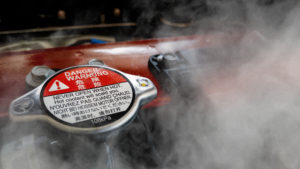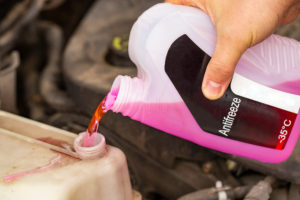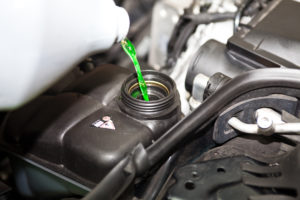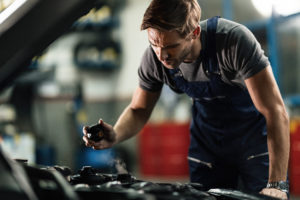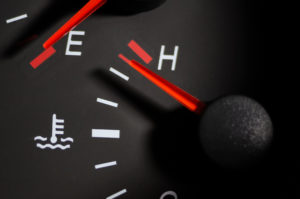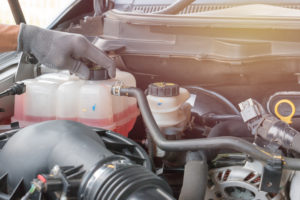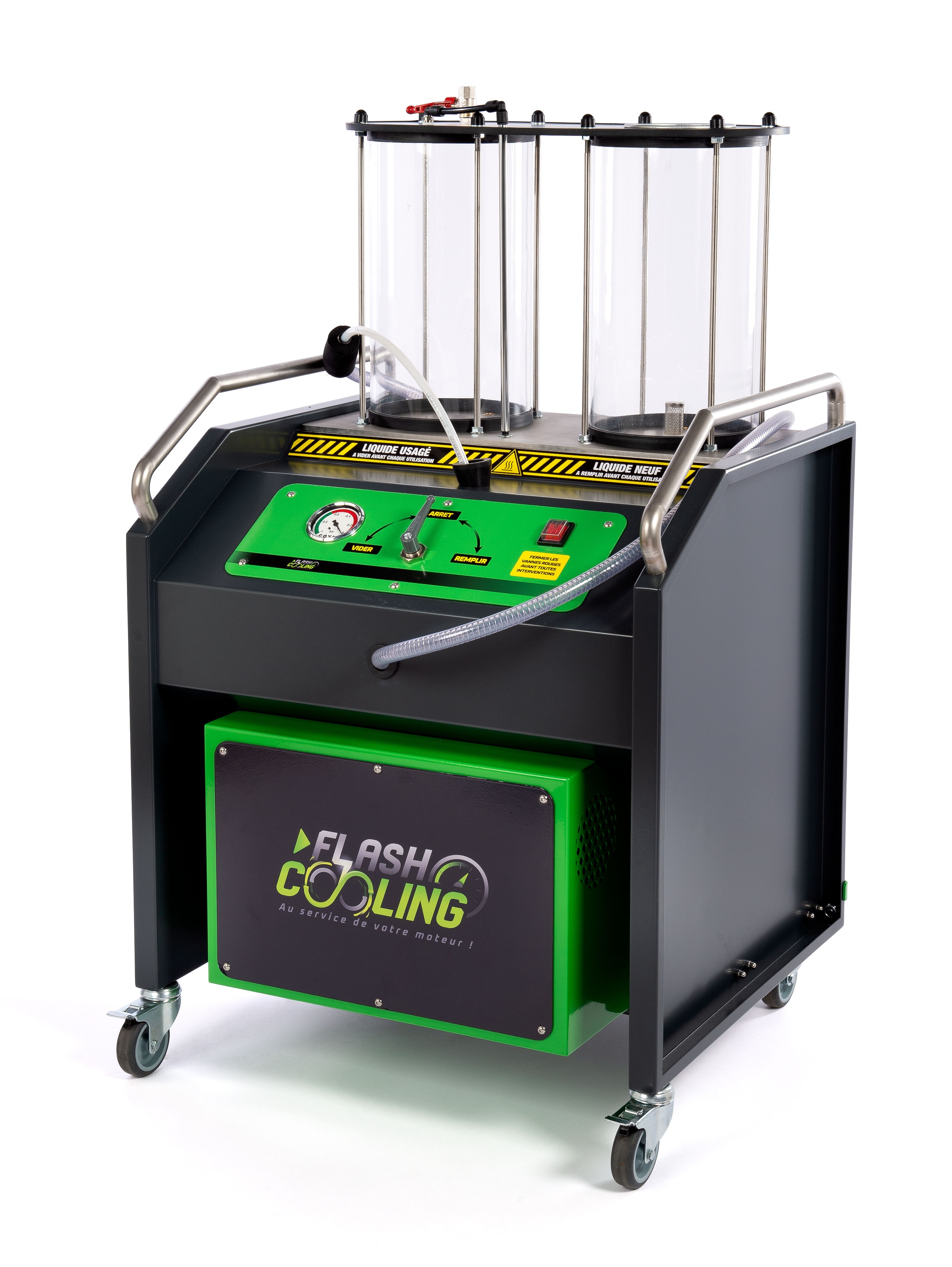What is the cooling circuit?
The radiator is the main element of the cooling circuit. The radiator’s inner bundle allows the coolant to circulate and transfer its heat to the metal cooling bands surrounding the bundle. The fan allows a flow of air to pass through the slats and dissipate the heat accumulated in the coolant.
The coolant
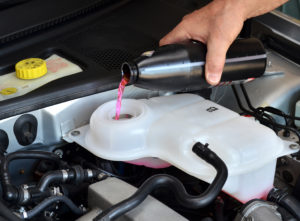 The coolant is also a major player in the proper functioning of the cooling circuit. It serves to protect the engine from overheating, freezing and rust. Its role is to absorb heat from the engine and dissipate it through the radiator.
The coolant is also a major player in the proper functioning of the cooling circuit. It serves to protect the engine from overheating, freezing and rust. Its role is to absorb heat from the engine and dissipate it through the radiator.
It is essential to use the correct type of coolant for each vehicle model. It is not advisable to mix different types of coolants.
Radiator hoses
 Radiator hoses are used to circulate the coolant to the engine, which flows to the radiator. They connect the upper and lower parts of the radiator to the engine
Radiator hoses are used to circulate the coolant to the engine, which flows to the radiator. They connect the upper and lower parts of the radiator to the engine
The water pump
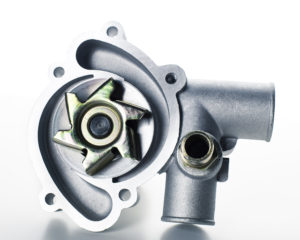 The water pump allows the liquid to circulate in the cooling circuit and in the engine block. Most often, it is activated by a belt installed on the pulley itself connected to the engine pulley, or by a timing belt running at the same speed as the engine.
The water pump allows the liquid to circulate in the cooling circuit and in the engine block. Most often, it is activated by a belt installed on the pulley itself connected to the engine pulley, or by a timing belt running at the same speed as the engine.
The heating radiator

The heater is the small device located under the dashboard of the vehicle.
On the dashboard, the temperature selector switch controls the temperature control valve located in the engine compartment. In the “warm” position, the temperature control valve opens, allowing engine coolant to flow through the heater radiator and thus heat the car’s interior. In the “cold” position, the valve closes, allowing cool air from the air conditioning system to circulate through the radiator heater and thus cool the passenger compartment.
The thermostat
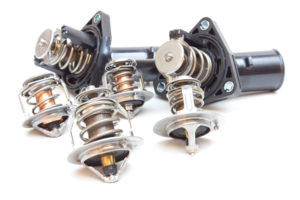 The thermostat is located in the engine, in the upper heater hose. Its function is to maintain the coolant and therefore the engine at the appropriate operating temperature. It should be noted that the engine thermostat is not connected to the driver controlled temperature selection knob. Once the engine is cold, the thermostat is closed, which is why the coolant only flows through the engine and heater, without passing through the heater. The aim is to give priority to heating the engine and the efficiency of the cooler and the driver in the passenger compartment.
The thermostat is located in the engine, in the upper heater hose. Its function is to maintain the coolant and therefore the engine at the appropriate operating temperature. It should be noted that the engine thermostat is not connected to the driver controlled temperature selection knob. Once the engine is cold, the thermostat is closed, which is why the coolant only flows through the engine and heater, without passing through the heater. The aim is to give priority to heating the engine and the efficiency of the cooler and the driver in the passenger compartment.
Once the optimum engine temperature is reached, the thermostat opens gradually to allow the coolant to pass through the radiator to prevent the temperature from rising further. While the engine is still in operation, the thermostat continuously monitors the flow of coolant to the radiator so that the engine maintains an optimal operating temperature.
The temperature gauge
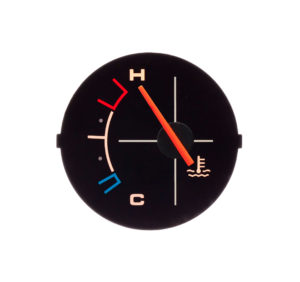
Located at the dashboard, the temperature gauge is connected to a probe located on the engine block. This probe allows the recording of changes in electrical resistance during heating of the engine and it allows to monitor the engine temperature acurately.
The expansion tank
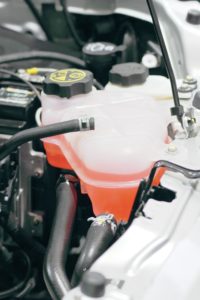
When the coolant contracts or expands, an overflow container is used as a reservoir. When hot coolant enters the radiator, it expands and the overflow is directed to this reservoir. When the radiator cools, the coolant contracts and causes a vacuum in the radiator, so this vacuum is then compensated for by the coolant supply from the same reservoir. The tank must be cleaned when the coolant is changed, as residues from the cooling system tend to settle in the tank.
The radiator cap
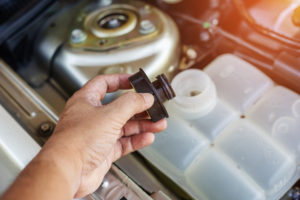 The radiator cap closes the filler opening into which the coolant is poured. In order to allow the cooling circuit to function properly it is essential that the radiator cap is designed to seal the circuit at a specific pressure.
The radiator cap closes the filler opening into which the coolant is poured. In order to allow the cooling circuit to function properly it is essential that the radiator cap is designed to seal the circuit at a specific pressure.


